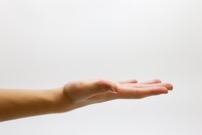By Sydney CBD Osteopath Dr Abbey Davidson
Do you suffer from Wrist and Forearm Pain?
The arm and wrist plays such an important and active role in our daily lives, but because of this, it is a common area for pain, and can often take longer than expected to heal. The forearm is made up of two bones, called the Radius and the Ulna, and the wrist is made up of eight small bones known as carpals. With a number of muscles, tendons and ligaments passing through the wrist and forearm, they are common sites for pain, which can be both local (in the wrist and forearm), or can refer into the hand, fingers and elbow.
Some of the common causes of wrist and forearm pain include trauma (fractures, dislocations, strains or sprains), overuse, anatomic abnormalities and arthritis.
What are the common conditions which cause pain in the wrist and forearm?
Some of the common causes of wrist and forearm pain include:
- Instability
- Tendonitis
- Peripheral Nerve Entrapment
- Carpal Tunnel Syndrome (CTS)
- Radial Tunnel Syndrome (Wartenberg’s Syndrome)
- Dorsal Impaction Syndrome
- Ganglions
What are the common structures which contribute to wrist & forearm pain?
The common structures which contribute to pain in the wrist and forearm include:
- Bones

- Muscles
- Ligaments
- Joints
- Nerves
- Tendons
What can I do to help myself with wrist and forearm pain?
With wrist/forearm trauma such a fall or over-stretching, it may be useful to apply ice within the first 48 hours after
injury, applying it in 20 minutes’ intervals and avoiding direct contact with the skin (wrapping towel around icepack). Ice application should also be considered with overuse type injuries after periods of aggravating activity. With this, we aim to decrease inflammation in the tissues and provide some pain reduction. Anti-inflammatory medication or topical gels may also be useful for your pain, which your doctor or health professional can guide you on. Heat packs can be considered after the initial 48-hour period to promote tissue repair and muscle relaxation.
Multiple muscles cross over the wrist and forearm, and tightness in these muscles can result in pain and other
symptoms. Stretching through these regions therefore can yield positive results in some cases. Range of motion exercises may also be indicated to prevent the loss of certain movements. Ask your health professional for some helpful advice if you are unsure on what stretches and exercises you are supposed to be doing.
If you are experiencing wrist or forearm pain, you should also assess if your desk set-up is ergonomic and consider the position of your wrist when participating in hobbies and sports. A health professional can provide you with an assessment of your work set-up and provide advice on how you can change your positions.
When should I seek professional help for my wrist and forearm pain?
You should consider booking an appointment with a health practitioner, such as an Osteopath, Physiotherapist or Chiropractor, if you have persistent pain and/or are experiencing any of the following symptoms:
- Redness, swelling or deformity
- Unable to perform certain work tasks due to pain
- Pain present at rest and not just during activity
- Grip weakness or pins/needles into the hand
What will a health practitioner do to help with my wrist and forearm pain?
Your first appointment with a health professional will typically begin with a series of questions being asked to allow your practitioner to better understand your complaints and pain. After questions have been asked, your health practitioner will perform range of motion and provocative testing to establish a diagnosis and shape your personalised treatment plan.
Hands on treatment will focus on improving the mechanics of the shoulder, elbow and wrist as well as decreasing muscle tension, improving joint range of motion and the path of nerves through the upper limb. Your session will be complemented by a health professional prescribing you at-home advice, stretches and exercises which are specifically designed to help you feel and function better.

For more information about common conditions of the Arm, Wrist and Hand, click on the following links below:





